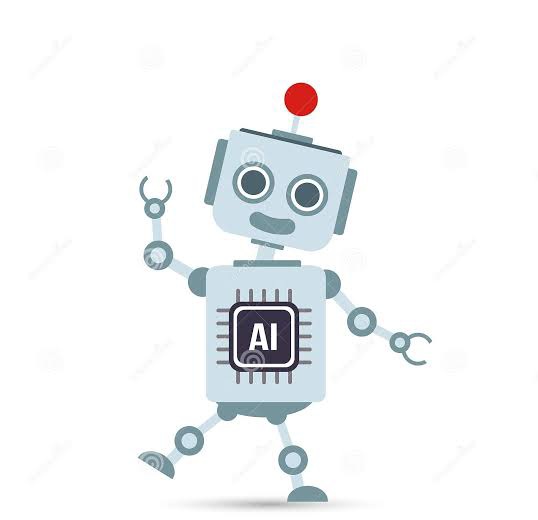ROBOTICS
Laws:- The laws of Robotics are a set of rules, laws or principles, which are intended as a fundamental framework to underpin the behavior of robots designed to have a degree of autonomy. The best known set of laws of robotics are written by Isaac Asimov in the 1940s. Asimov’s Laws or The three laws are a set of rules devised by science fiction author Isaac Asimov. The rules were introduced in his 1942 short story “Runaround” although they had been foreshadowed in some earlier stories. The three Laws , quoted from the book “Handbook of Robotics, 56th Edition”, are:-
1st Law:- “A robot may not injure a human being or, through inaction, allow a human beings to come to harm”.
2nd Law:- “A robot must obey the orders given it by human beings except where such orders would conflict with the 1st Law”.
3rd Law:- “A robot must protect its own existence as long as such protection does not conflict with the 1st or 2nd Law”.
These form an organizing principle and unifying theme for Asimov’s robotic-based fiction, appearing in his Robot series, the stories linked to it, and Asimov’s Lucky Starr series of young-adult fiction. The Laws of Asimov’s are incorporated into almost all of the positronic robots appearing in his fiction, and cannot be bypassed, being intended as safety feature. Many of Asimov’s robot-focused stories involve robots behaving in unusual and counter intuitive ways as in unintended consequence of how the robot applies the Asimov’s Laws to the situation in which it finds itself.
The original laws have been elaborated by Asimov and other authors. Asimov himself made slight modifications to the first three laws in various books and short stories to further develop how robots would interact with humans and each other. Asimov also added a fourth law, or zeroth law, to precede the others:-
Zeroth Law:- “A robot may not harm humanity or by inaction allow humanity to come to harm”.
The Three Laws along with the zeroth law have pervaded science fiction and are referred to in many books, films and other media. They have impacted thought on ethics of AI as well.
Types of Robots- There are five types of robots. They are given below:-
- Cartesian- The most commonly used robot type is Cartesian. Plant operator often default to this type robot because they ae easy to use and program. The linear movements of the Cartesian elements give the robot a cube shaped workspace that fits best with pick and place applications and can range from 100mm to 10 meters. These robots are highly customizable.
- Cylindrical- Cylindrical robots are similar to Cartesian in their axis of motion. Most cylindrical robots ae made of two moving elements, one is rotary and the other is linear actuators.
- SCARA- SCARA robots offer a more complete solution than the Cartesian Robot or Cylindrical robot. They are all in one robots, meaning a SCARA robot is equipped with x, y, z and rotary motion in one package that comes ready-to-go, apart from end-of-arm tooling. Application are also similar to Cartesian or Cylindrical robots, but SCARA robots can move quicker than the other two. They are often seen in biomed applications due to their small work area. Because SCARAs have the easiest integration they seem like the best solution for the majority of applications, but Cartesians are more common because of their customization level.
- 6-Axis- Another all in one robot type is 6-Axis. Though sometimes 6-Axis robots can be almost toy sized, they are typically very large and used for large assembly jobs such as putting seats into a car on an assembly line. 6-Axis robots operate like a human arm and can pick up materials and move them from one place to another. 6-Axis robots can come in complete solutions like SCARA and can move quick, however their programming is more complicated.
- Delta- Delta robots are the fastest and most expensive. They have a unique and dome-shaped work envelop in which they can achieve very high speeds. These robots are best for fast pick-and-place or product transfer applications like moving parts from a conveyor belt and placing them in boxes or onto another conveyor belt. They also come as complete solutions for machine designers and are more complicated in use than the 6-Axis robots or SCARA robots.
Components of Robots – The components of robots are given below:-
- Power supply- The working power of the robot is provided by batteries, hydraulic, solar power or pneumatic power sources.
- Actuators- These are the energy conversion device used inside the robot. The function of Actuators is to convert energy into movement.
- Electric motors- Motors are electromechanical component which are used for converting electrical energy into its equivalent mechanical. In robots electric motors are used for providing rotational movement.
- Sensors- These provides real time information on the task environment. Tactile sensors imitates the mechanical properties of touch receptors of human fingerprints and a vision sensor is used for computing the depth in the environment.
- Controller- This is a part of robot that coordinates all motion of the mechanical system. The heart of controller is a microprocessor linked with the input/output and monitoring device.
Application of Robotics- Application or uses of robotics are given below:-
- Used in agriculture
- Used for entertainment
- Used for household purposes
- Used in laboratories: science, engineering, etc.
- Used in health care: hospitals, patient-care, surgery, research, etc.










